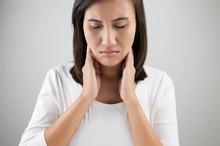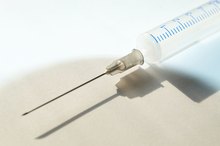Junel--ethinyl estradiol and norethindrone--is an oral contraceptive used for the prevention of pregnancy. Junel works by preventing ovulation and altering the lining of the cervix and uterus. Junel may also be used for the treatment of severe acne. The medication will help to prevent pregnancy, but will not protect against sexually transmitted infections such as HIV. There are some side effects of Junel that women should be aware of.
If you are experiencing serious medical symptoms, seek emergency treatment immediately.
Breast Tenderness and Swelling
Women taking Junel may experience breast tenderness and swelling. These side effects occur due to the hormonal changes associated with Junel. Breast tenderness and swelling may be similar to the breast discomfort that may be experienced prior to a woman's period. These side effects may lessen over time as the body adjusts to Junel. Severe breast pain or tenderness, or any changes in breast tissue, should be reported to a physician for further evaluation. Women with a history of hormone receptive breast cancer should not take Junel.
- Women taking Junel may experience breast tenderness and swelling.
- Breast tenderness and swelling may be similar to the breast discomfort that may be experienced prior to a woman's period.
Alteration in Weight and Appetite
Nur-Isterate Side Effects
Learn More
Women may experience an increase in appetite and weight gain while taking Junel. Eating a sensible diet low in fat and calories, and exercising daily, will help to reduce the risk of additional weight gain.
Menstrual Changes
Junel may cause menstrual irregularity. Women may experience spotting between periods, breakthrough bleeding, changes in menstrual flow and missed periods while taking Junel. These side effects usually diminish after a few months of taking Junel. Women who experience severe menstrual irregularity and missed periods should consult their gynecologist.
- Junel may cause menstrual irregularity.
- Women may experience spotting between periods, breakthrough bleeding, changes in menstrual flow and missed periods while taking Junel.
Severe Side Effects
The Side Effects of Microval
Learn More
According to Drugs.com, taking hormonal birth control can increase a woman's risk of blood clots, stroke or heart attack 1. The risk of these side effects is increased for those women who smoke and are older than 35 years of age. These symptoms should be reported to a health care provider immediately.
Related Articles
References
Writer Bio
Laura Candelaria is a family nurse practitioner and assistant professor of nursing and nutritional science. Her experience includes neonatal and pediatric intensive-care, women's oncology, gynecology, obstetrics, lactation, nutrition and infertility. She has been published in "Nursing Spectrum," "Newsday" and on various websites.







